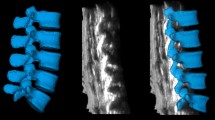Abstract
Introduction
Ultrasound-guided punctures are a new technique in anesthesia. However, training in these techniques requires conditions resembling real life as far as possible for learning purposes. Several models are available, but none associates realistic anatomy and lifelike sensations of the passage of fascias. The aim of our study was to compare fresh and Thiel’s embalmed cadavers for ultrasound-guided punctures.
Methods
Eight fresh cadavers and eight Thiel’s embalmed cadavers were investigated. The cervical region was scanned with an ultrasound probe. Age, sex and body mass index (BMI) were recorded. Visibility of he structures, including sternocleidomastoid (SCM) muscle, anterior and middle scalene muscles, thyroid gland, nerve and the needle, was evaluated as 0 (not visible or bad visibility) or 1 (good visibility). The feeling (“pop”) of passing the fascias was noted as 0 (not felt) or 1 (felt). The possibility of nerve displacement with the needle, the difficulty of intraneural injection and the possibility of nerve penetration and nerve swelling were all recorded as 0 (not possible) or 1 (possible).
Results
The two groups were comparable in terms of sex, age and BMI. Visibility of the SCM muscle and the needle was better in the Thiel group. Moreover, the “pop” feeling and nerve swelling were significantly more frequently present in the Thiel group. There was no significant difference in terms of the other results between the two groups.
Conclusions
Cadavers embalmed according to Thiel’s method should be recommended for ultrasound-guided punctures as a realistic and lifelike model.
Similar content being viewed by others
References
Alberty J, Filler TJ, Schmal F et al (2002) Thiel method fixed cadaver ears: a new procedure for graduate and continuing education in middle ear surgery. HNO 50(8):739–742
Benkhadra M, Lenfant F, Nemetz W et al (2008) A comparison of two emergency cricothyroidotomy kits in human cadavers. Anesth Analg 106(1):182–185
Chantzi C, Saranteas T, Paraskeuopoulos T et al (2007) Ultrasound and transcutaneous neurostimulator combined technique as a training method for nerve identification in anesthesia residents. Reg Anesth Pain Med 32(4):365–366
Dessieux T, Estebe JP, Bloc S et al (2008) Evaluation of the learning curve of residents in localizing a phantom target with ultrasonography. Ann Fr Anesth Reanim 27(10):797–801
Di Domenico S, Santori G, Porcile E et al (2007) Inexpensive homemade models for ultrasound-guided vein cannulation training. J Clin Anesth 19(7):491–496
Feigl G, Fuchs A, Gries M et al (2006) A supraomohyoidal plexus block designed to avoid complications. Surg Radiol Anat 28(4):403–408
Feigl G, Anderhuber F, Schwarz G et al (2007) Training methods for regional anaesthesia: evaluation and comparison. Anaesthesist 56(5):437–443
Feigl GC, Anderhuber F, Dorn C et al (2007) Modified lateral block of the suprascapular nerve: a safe approach and how much to inject? A morphological study. Reg Anesth Pain Med 32(6):488–494
Peschaud F, Malafosse R, Floch-Prigent PL et al (2006) Anatomical bases of prolonged ilio-inguinal-hypogastric regional anesthesia. Surg Radiol Anat (Germany) 28(5):511–517
Peuker ET, Werkmeister R, Pera F et al (2001) Surgical procedures in mouth, jaw and facial surgery in Thiel embalmed body donors. Mund Kiefer Gesichtschir 5(2):141–143
Pollard BA (2008) New model for learning ultrasound-guided needle to target localization. Reg Anesth Pain Med 33:360–362
Schwarz G, Feigl G, Kleinert R et al (2002) Pneumatic pulse simulation for teaching peripheral plexus blocks in cadavers. Anesth Analg 95(6):1822–1823
Terkamp C, Reindell H, Manns M et al (2005) Improvement of ultrasound education by simulator training. Praxis 94(9):329–332 (Bern 1994)
Thiel W (1992) An arterial substance for subsequent injection during the preservation of the whole corpse. Ann Anat 174(3):197–200
Thiel W (1992) The preservation of the whole corpse with natural color. Ann Anat 174(3):185–195
Thiel W (2002) Supplement to the conservation of an entire cadaver according to W. Thiel. Ann Anat 184(3):267–269
Tsui BC, Dillane D, Walji AH et al (2007) Cadaveric ultrasound imaging for training in ultrasound-guided peripheral nerve blocks: upper extremity. Can J Anaesth 54(5):392–396
Tsui B, Dillane D, Pillay J et al (2008) Ultrasound imaging in cadavers: training in imaging for regional blockade at the trunk. Can J Anaesth 55(2):105–111
van Geffen GJ, Rettig HC, Koornwinder T et al (2007) Ultrasound-guided training in the performance of brachial plexus block by the posterior approach: an observational study. Anaesthesia 62(10):1024–1028
Wolff KD, Kesting M, Mucke T et al (2008) Thiel embalming technique: a valuable method for microvascular exercise and teaching of flap raising. Microsurgery 28(4):273–278
Acknowledgments
This study was supported solely by governmental sources (Ministères Français de la Santé de la Recherche et de l’Education Nationale). Sonosite laboratory provided the equipment, which was used free of charge. We would like to thank Denis Genelot, preparer of the Department of Anatomy of Dijon, the laboratory assistants of the Institute of Anatomy Graz, Mr Eric Debaere and Mr Fabien Jenn (Sonosite Laboratory) for their helpful technical support.
Conflict of interest statement
No conflict of interest has been declared.
Author information
Authors and Affiliations
Corresponding author
Rights and permissions
About this article
Cite this article
Benkhadra, M., Faust, A., Ladoire, S. et al. Comparison of fresh and Thiel’s embalmed cadavers according to the suitability for ultrasound-guided regional anesthesia of the cervical region. Surg Radiol Anat 31, 531–535 (2009). https://doi.org/10.1007/s00276-009-0477-z
Received:
Accepted:
Published:
Issue Date:
DOI: https://doi.org/10.1007/s00276-009-0477-z




